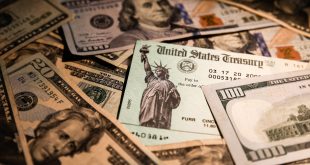Friday’s trading day fluctuated between risk-on/off, on reports from Russia saying that its President Putin seen certain positive shifts in talks with Ukraine, while Ukraine Foreign Minister, saying the opposite. That said, the GBP/USD is trading at 1.3035, down 0.39%.
Economic Data
US energy firms this week added oil and natural gas rigs for the ninth time in 10 weeks after Russia’s invasion of Ukraine drove crude prices to their highest since 2008.
The oil and gas rig count, an early indicator of future output, rose 13 to 663 in the week to March 11, its highest since April 2020, energy services firm Baker Hughes Co said in its closely followed report on Friday.
Baker Hughes said that puts the total rig count up 261 rigs, or 65%, over this time last year. US oil rigs rose eight to 527 this week, their highest since April 2020, while gas rigs gained rose five to 135, their highest since October 2019.
Friday featured some significant UK economic data. UK’s GDP for January rose 0.8% higher than the 0.2% contraction in December. Furthermore, Industrial Production for January rose 0.7% m/m, influenced by the spike of 0.8% growth in manufacturing. The services sector increased by 0.8% higher than the -0.5% fall of December.
The US economic docket featured the University of Michigan Consumer Sentiment for March, which declined from 62.8 in February to 59.7, while Inflation expectations rose to 5.4% from 4.9% in the previous reading. It is the lowest reading since November of 2011.
Data released on Friday showed the Canadian economy created more than 300K jobs in February, much more than expected. The numbers from the report are more than enough justification for another rate hike in April from the Bank of Canada.
It may have still been outside, but the Canadian labour market brought the heat in February and turned the temperature up on the Bank of Canada to deliver more interest rate hikes.
The 337K gain in jobs was well above the consensus forecast and the prior month’s decline (+127.5K and -200K respectively), and took the unemployment rate down to 5.5% despite a rise in participation.
Other Developments
Inflation expectations rose sharply due to a surge in fuel prices exuberated by the Russian invasion of Ukraine.
US crude futures traded over $130 per barrel this week, their highest since July 2008 as Russia’s Feb. 24 invasion of Ukraine stoked global energy supply concerns.
While high prices boost profits, producers fear expensive oil could also impact demand, and huge new investments in drilling will produce oil only after the crisis has passed.
The British pound falls versus the US Dollar on broad US dollar strength amid a risk-off market sentiment. UK’s positive economic data and BoE rate hike bets expectations were not able or enough to support the sterling.
The British pound heads into the weekend, set to record losses as Wall Street’s bell signals the end of a hectic trading week, driven by market sentiment, leaving macroeconomics or news on central banks aside.
The US Dollar Index DXY gains 0.59% in the day, as USD bulls eye the 100 as the New York session winds down. The US imposes a new tier of sanctions against Russia.
The US Dollar Index (DXY), a gauge of the American currency’s value against a basket of six rival currencies, advances 0.60% during the North American session, reflecting a risk-off market mood, as investors sought out to safe-haven peers, being the US dollar the safest. At the time of writing, the DXY is at 99.119.
The market sentiment fluctuated throughout the day. In the mid-European session, news that Russia-Ukraine talks according to Russia’s President Vladimir Puttin saying that there had been “certain positive shifts” in negotiations with Ukraine.
US equities closed the week in the red, with the S&P 500, Dow Jones, and Nasdaq down 1.30%, 0.69%, and 2.18%, respectively. As measured by the US Dollar Index, the USD is set to finish the week eyeing the 100 mark, up 0.61%, sitting at 99.116, a headwind for the GBP/USD.
Overnight, the GBP/USD braced to the November 2020 lows around 1.31050, and in fact reacted to some UK economic releases, reaching a daily high around 1.3139, to then follow the path of least resistance, falling under the 1.3100 handle, printing a new YTD low at 1.3027. The GBP/USD first support would be 1.3000.
Also Read
US Drillers Add Oil, Gas Rigs For Ninth Time In Ten Weeks
Before FOMC’s Meeting, Experts Still React To CPI Data
US Dollar Extends Gains For Fifth Weeks
US Shares Drop Back As Investors Doubt Putin’s Comments
Canada’s Employment Data Justifies Another Rate Hike in April
FOMC Could Opt Cautious Rate Policy Amid Ukraine Uncertainty
US Dollar Surges Over Putin’s Positive Comment On Peace Talks
Can Global Economy Go Ahead Without Russian Commodities?
Gold To Fall Toward $1,950, $1,940 On Hawkish Fed
WTI set to end historically volatile week under $110
Biden: US to revoke permanent normal trade relations with Russia
 Noor Trends News, Technical Analysis, Educational Tools and Recommendations
Noor Trends News, Technical Analysis, Educational Tools and Recommendations





